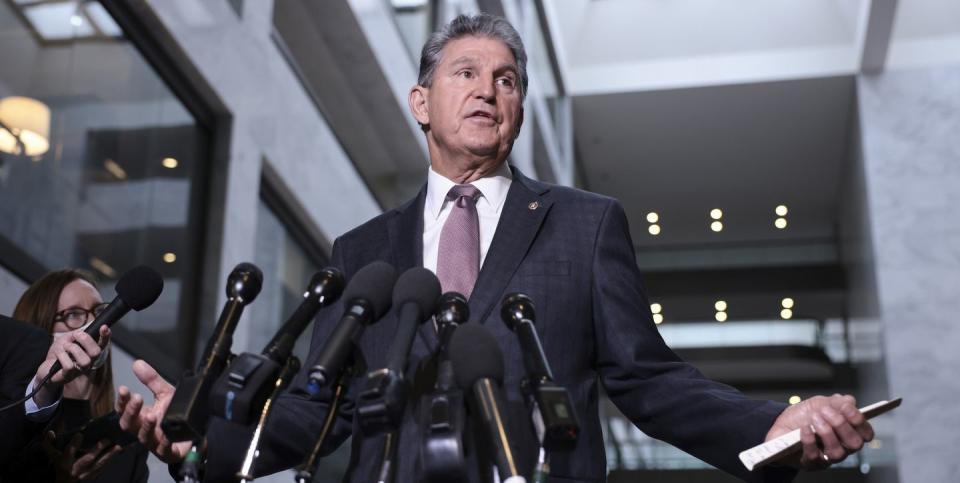Look at How We Discuss the Defense Budget vs. How We Discuss Investing in Our People

The United States Congress is on track to spend more than $7 trillion over the next 10 years on the Pentagon, just as it did the previous 10 years. How will we pay for it? Shut up, Commie. We don't ask questions like that around here.
That kind of talk is reserved for spending on childcare, or paid parental and sick leave, or responding to the climate crisis. There's a bipartisan deal, extensively haggled upon, to spend $1 trillion on so-called "hard infrastructure" projects over the next decade—roads, bridges, trains. There's another bill, short-handed as "the reconciliation bill," which has the support only of congressional Democrats, and which originally aimed to spend $3.5 trillion on those "care infrastructure" initiatives above—childcare, paid leave—and others. (As usual, Democrats are now working overtime negotiating amongst themselves to make the bill worse.) The hard-infrastructure bill is paid for primarily with wishful accounting. The reconciliation bill is paid for, at least in significant part, with tax hikes on the rich and corporations. But it's the latter bill that apparently poses a grave threat to the fiscal health of the American nation.
And as usual, we never even pretend to discuss how we're going to pay for more bombs and bullets and planes that don't work. Swipe that credit card! Is it because we always talk about the defense budget on a single-year basis? The proposed outlay for 2022, newly unveiled in the Senate defense appropriations bill, is $725 billion—$10 billion above what the Pentagon asked for. This is not the first time, by a long shot, that Congress has gone divorced-parent-at-Christmas when it comes to funding the Department of Defense. (Or, perhaps more precisely, funding projects that will bring jobs to this or that congressional district, or forking contracts over to defense contractors who lobby and pay campaign bills.) But the Democratic reconciliation package is almost exclusively referred to as "the $3.5 trillion bill." Rarely are the specific contents discussed—for instance, which programs is Senator Joe Manchin looking to cut and why?—but more to the point, it is never referred to as costing $350 billion a year. Again, we're talking less than half the defense budget.

It's hard not to keep one eye on the Manufacturing Consent meter here, because we in the mass media are undoubtedly playing our role. Whether or not you subscribe to the existence—or even possibility—of Objective Journalism, it is simply a fact that nearly everyone involved in national politics at the moment is working to frame this discussion in clear terms: incredibly high levels of military spending are cast as not merely normal, but almost baked into our national priorities. Bringing the United States social-safety net in line with over advanced democracies is cast as a free-spending lefty wishlist. Yes, the current proposals to expand the social-safety net are new, but there has been a systematic failure, accidental or not, to present these proposals in full context.
The care infrastructure bill was always going to be cast by Republicans as reckless behavior that will cause inflation and add to the national debt. If the news media considers itself the referee in these battles, it ought to ensure there is a level playing field for discussing all spending proposals. We should either use 10-year windows or one-year windows. And we ought to discuss the specifics of what's in the damn bills. Just one of those planes that don't quite work—the F-35—costs about $80 million to acquire, and $38,000 an hour to fly. That sounds like a lot of college tuition to this layman.
You Might Also Like

 Yahoo Finance
Yahoo Finance 